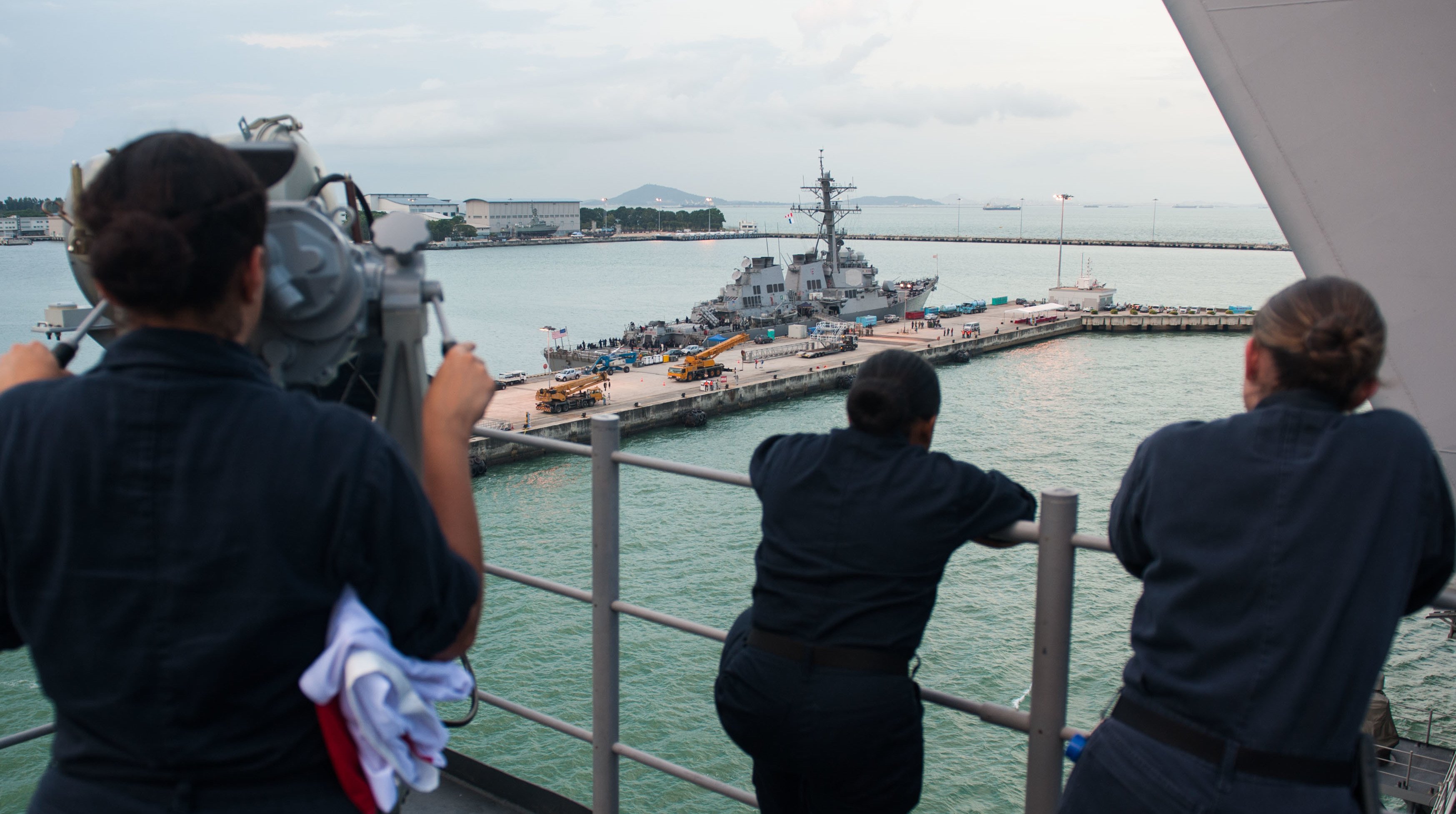
Almost two years after the collision between a U.S. destroyer and a merchant ship off Singapore, the first in-depth independent investigation has determined the most probable cause for the incident that killed 10 sailors was lack of adequate Navy oversight and training.
The National Transportation Safety Board found that the most likely cause of the fatal collision of guided-missile destroyer USS John S. McCain (DDG-56) and chemical tanker Alnic MC on Aug. 21, 2017, “was a lack of effective operational oversight of the destroyer by the U.S. Navy, which resulted in insufficient training and inadequate bridge operating procedures,” reads the investigation.
The conclusion of the report breaks from the Navy’s own assessment of the incident, which placed the blame for the early morning collision almost entirely on the leadership of McCain and not on what the NTSB determined were the service’s own “insufficient training and inadequate bridge operating procedures.”
The 2017 Comprehensive Review of Recent Surface Force Incidents, led by then-U.S. Fleet Forces Command commander Adm. Phil Davidson, placed blame at the feet of the ship’s commander, Cmdr. Alfredo Sanchez, and “leaderships’ loss of situational awareness in a high traffic area and failure to follow safe navigational practices, coupled with watchstanders who were not proficient with ship control console operations (steering and throttle control) or associated casualty response procedures.”
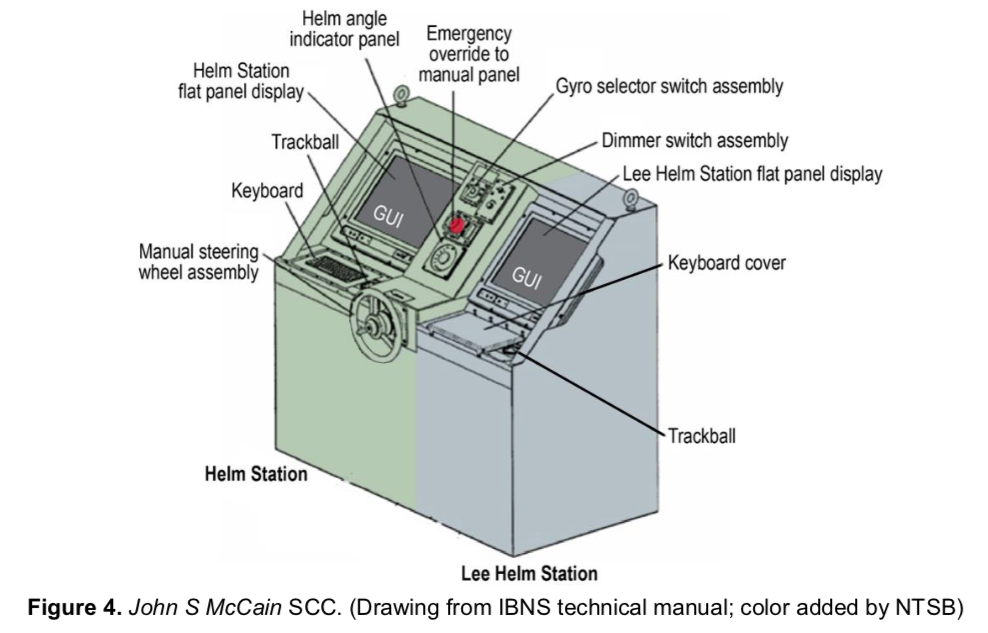
Both Davidson and the NTSB report agreed on the basic facts: watchstanders on the bridge had not understood how the Northrop Grumman-designed integrated bridge and navigation system (IBNS) helm controls functioned in depth.
As the warship approached the busy shipping lane off of Singapore, an attempt to split the steering and throttle to two different consoles in fact transferred all controls to the lee helmsman – a sailor who was less familiar with the intricacies of the IBNS and had not slept the night before. The mistake led the helmsman to believe he had lost control of the ship. Meanwhile, the ship’s throttles – operated by touch screen – became unlinked.
“Control of the port shaft and steering was now at the lee helm station, while control of the starboard shaft remained at the helm station,” read the report.
When the helmsman thought he was slowing down both propellers, he was in fact only reducing the speed of the port screw, causing a sharp turn in front of the tanker.
The confusion around how the controls had been configured led to three minutes of the watch being unable to control the ship, allowing McCain to move in front of Alnic MC – unbeknownst to most of the bridge team. The collision occurred shortly after the bridge regained control of McCain.
According to the NTSB report, the watchstanders aboard McCain were qualified to stand their watches under the Navy-wide Personnel Qualification Standard (PQS). However, investigators found that the Navy-approved PQS didn’t address the nuances of the new navigation system.
“The PQS booklet did not specify the transfer of control between bridge stations,” read the report.
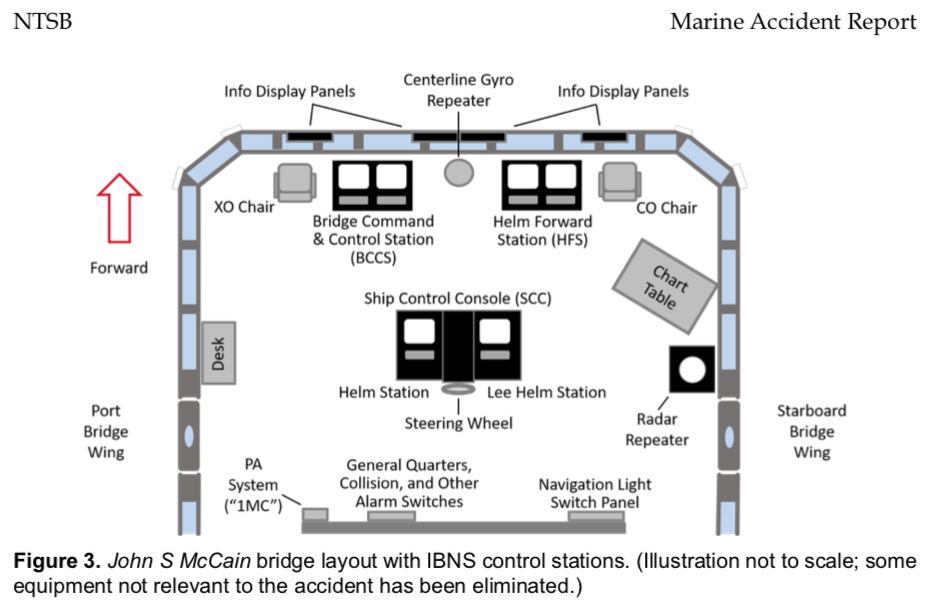
McCain was the first ship in U.S. 7th Fleet to be equipped with the IBNS that was installed in 2016 as part of a repair period in Japan.
The destroyer’s enlisted head of the deck department, then-Chief Boatswain’s Mate Jeffery Butler, was in charge of training sailors to operate the new system that replaced the manual throttle controls with touch screens.
During his court martial last year, Butler testified that the extent of training he received to operate the IBNS was an hour-long session with a master helmsman on the waterfront who was familiar with IBNS and then the tech manuals. With that knowledge, he in turn had to train the crew of McCain to operate the IBNS
“[It was] difficult to get training,” he testified. “We asked for the techs to come over, but they never showed.”
Though qualified to stand their watches by Navy standards, the crew’s understanding of the less-than-one-year-old navigation system was poor, the NTSB found.
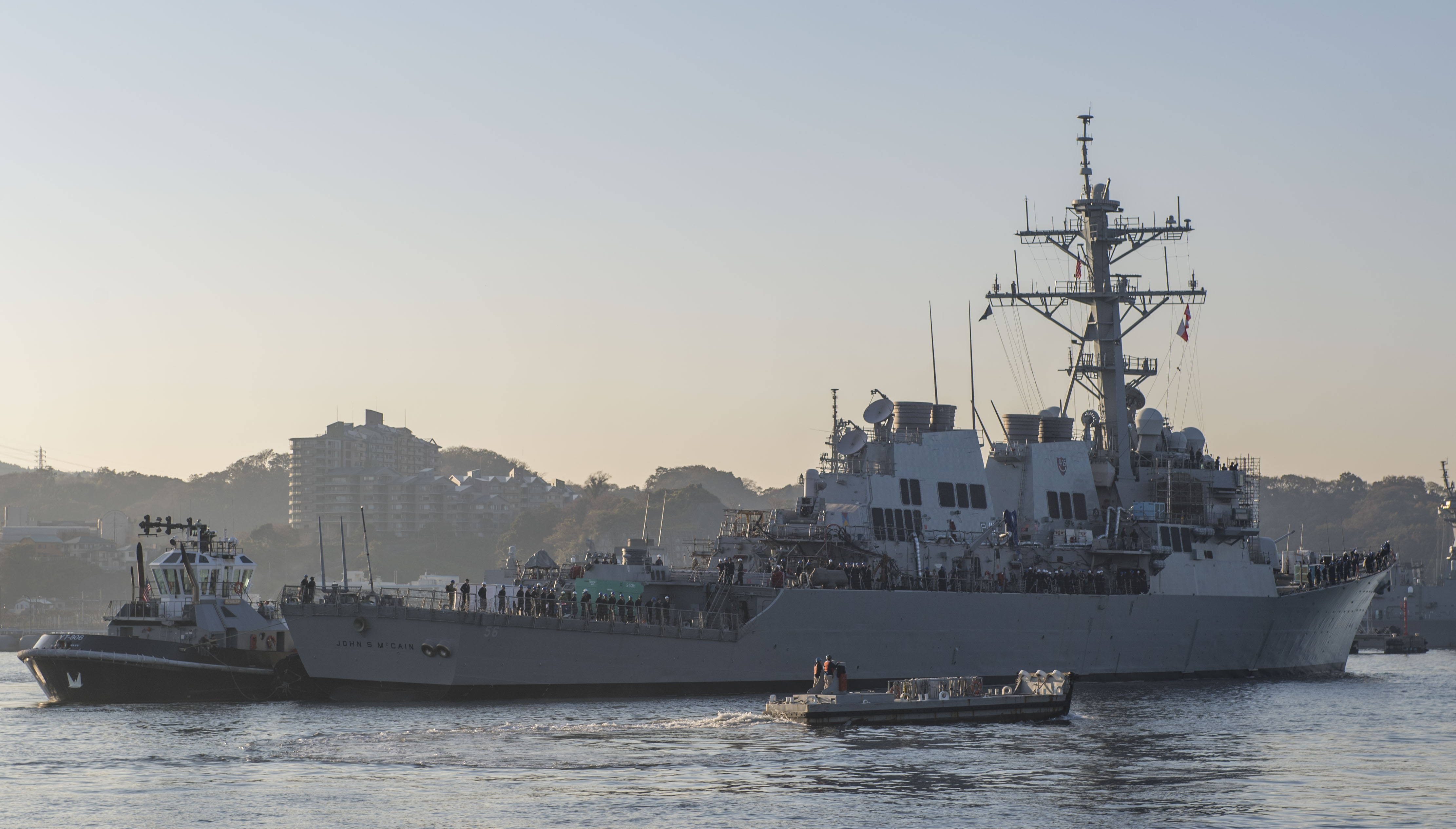
“Their misunderstandings expressed during the post-accident interviews and the misunderstandings of other crewmembers who were permanently assigned to the John S McCain point to a more fundamental issue with the qualification process and training with the IBNS,” the NTSB report found.
In a statement to USNI News, the service acknowledged that it had addressed concerns on IBNS training as part of Davidson’s review and through Secretary of the Navy Richard V. Spencer’s separate Strategic Readiness Review.
“The Navy released 22 fleet advisories governing the safe and effective operation for all variants of ship steering systems, to include IBNS,” reads the statement. “These system-specific advisories validated and updated existing directives governing the configuration, operation, and control of steering and propulsion systems during normal and casualty control scenarios.”
In addition to the unfamiliarity of the controls, the report found that the lack of sleep of the bridge team was a factor in the collision.
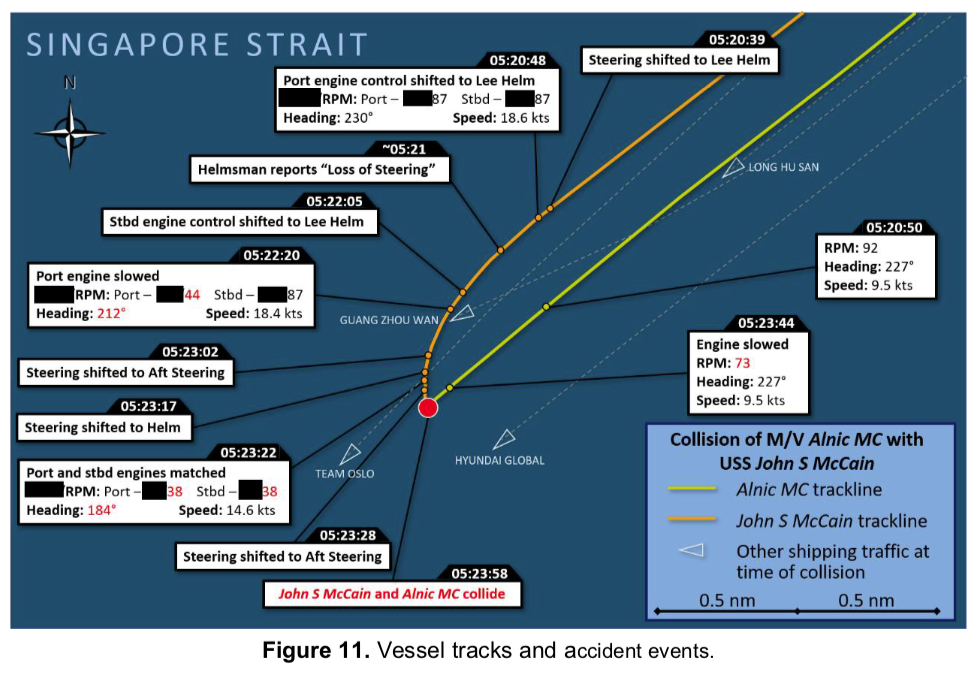
“According to Navy records, the 14 crew on the bridge averaged just over 4.9 hours of rest in those 24 hours,” read the report.
In total, the NTSB found seven safety issues associated with the crash.
Safety issues identified in this accident include the following:
- The decision to transfer the location of thrust control on board the John S McCain while the vessel was in a congested waterway
- The lack of very high frequency radio communications between the vessels
- The automatic identification system data transmission policy for Navy vessels
- The procedures for the transfers of steering and thrust control on board the John S McCain
- The training of Navy bridge watchstanders
- The design of the destroyer’s Integrated Bridge and Navigation System
- Navy watchstanders’ fatigue
The fatal collisions of McCain and USS Fitzgerald (DDG-62), plus two other incidents in the Western Pacific, prompted the Navy to take a holistic look at how it operates its surface forces and trains its surface officers and enlisted sailors. The service has said it has implemented more than 100 changes to that end.





